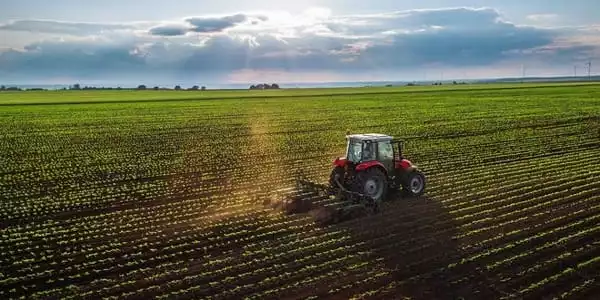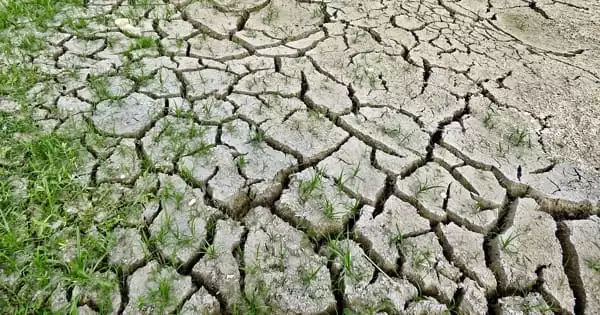NASA is warning that climate change could affect maize and wheat production as early as 2030, a shift that could have disastrous consequences for the global breadbasket. The new study used crop models and climate projections to assess the global impact of climate change in the coming years. According to the researchers, this study represents the most comprehensive set of crop yield projections to date, shedding light on how climate change, largely caused by human activity, will impact agriculture and potential food scarcity in the near future.
Researchers discovered that rising temperatures, levels of greenhouse gas emissions and carbon dioxide, as well as changes in rainfall, will likely have disastrous effects on common crop yields in a study published this week in the journal Nature Food. Even NASA researchers were taken aback by the findings.
Using advanced climate and agricultural models, scientists discovered that the change in yields is caused by projected temperature increases, shifts in rainfall patterns, and elevated surface carbon dioxide concentrations caused by human-caused greenhouse gas emissions. These changes would make it more difficult to grow maize in the tropics, but they could broaden the growing range of wheat.
We did not expect to see such a fundamental shift in crop yield projections as compared to crop yield projections from the previous generation of climate and crop models conducted in 2014. A 20% reduction in current production levels could have global ramifications.
Jonas Jägermeyr
According to the researchers, even if ideal changes are made to help limit global temperature increases, farmers around the world are still “facing a new climate reality,” one that may result in some countries becoming wealthier while others become poorer and face food insecurity.
Temperature rises aren’t the only issue driving this future change, with the study pointing out that increased carbon dioxide in the atmosphere, for example, may increase wheat and other crop growth while decreasing the nutritional value of the crops.
“We did not expect to see such a fundamental shift in crop yield projections as compared to crop yield projections from the previous generation of climate and crop models conducted in 2014,” said lead author Jonas Jägermeyr, a climate scientist at NASA’s Goddard Institute for Space Studies, in a statement. “A 20% reduction in current production levels could have global ramifications.”

Breadbasket Blight
The researchers used complex climate model simulations to look at the effects of rising greenhouse gas emissions on the climate up to the year 2100. They then fed this information into crop model simulations to see how changes in temperature, rainfall, and CO2 levels affected growth rates.
Maize yields could fall by as much as 24% by 2030. Wheat yields could increase by 17 percent over the same time period, but then level off around the mid-century mark. Maize, or corn, is grown all over the world, with large amounts produced in countries closer to the equator. Maize yields in North and Central America, West Africa, Central Asia, Brazil, and China may decline in the coming years and beyond as average temperatures rise across these breadbasket regions, putting more stress on the plants.
Wheat, which grows best in temperate climates, may expand its growing area as temperatures rise, including the Northern United States and Canada, the North China Plains, Central Asia, Southern Australia, and East Africa, but these gains are likely to plateau by the mid-century.
When simulating future crop yields, models take into account more than just temperature. Higher levels of carbon dioxide in the atmosphere improve photosynthesis and water retention, increasing crop yields but often at the expense of nutrition. This effect is more pronounced for wheat than maize, which is better captured in the current generation of models. Rising global temperatures are also associated with changes in rainfall patterns, as well as the frequency and duration of heat waves and droughts, which can have an impact on crop health and productivity. Higher temperatures also shorten growing seasons and hasten crop maturity.
“We’re driving crop simulations that are effectively growing virtual crops day by day, powered by a supercomputer, and then looking at the year-by-year and decade-by-decade change in each location of the world,” said Alex Ruane, coauthor of the paper and codirector of the GISS Climate Impacts Group, in a statement.
While the data was clear on the effects of climate change on wheat and maize yields, the models did not paint a clear picture on the effects on other crops such as rice and soy. Even if drastic measures are taken, the agricultural consequences may be severe.
“Even under optimistic climate change scenarios, where societies enact ambitious efforts to limit global temperature rise, global agriculture is facing a new climate reality,” Jägermeyr said, noting that “impacts in even one region’s breadbasket will be felt globally” because of our global food system.















